| Corcoran Technical Trading Patterns For March 10 |
| By Clive Corcoran |
Published
03/10/2009
|
Stocks
|
Unrated
|
|
|
|
Corcoran Technical Trading Patterns For March 10
The daily chart for the Nasdaq Composite (IXIC) illustrates the real failure of the market to mount any kind of meaningful counter-trend rally or even bounce since early February.
The close yesterday at 1268 was the lowest level on the index since February 2003 and the smaller caps are now approaching strategically important 2002/3 levels.
In overseas action before a possible turnaround Tuesday session for the US markets, Hong Kong put in a decent showing with a three percent gain as concerns about HSBC abated somewhat, and the European markets are currently moving ahead with one percent plus gains.
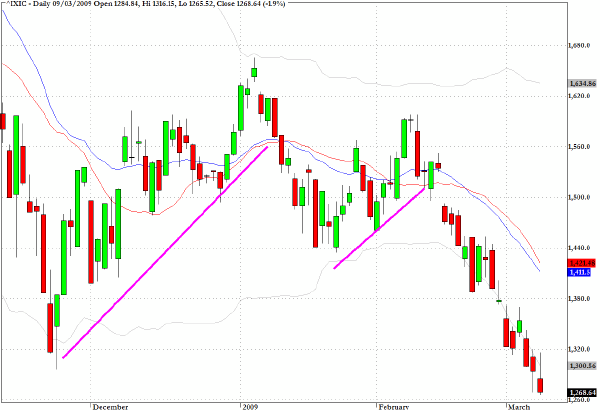
The Russell 2000 (RUT) dropped more than two percent yesterday and is now approaching the levels around 325 which I mentioned as potential support levels in last week's commentary and on a slot on CNBC.
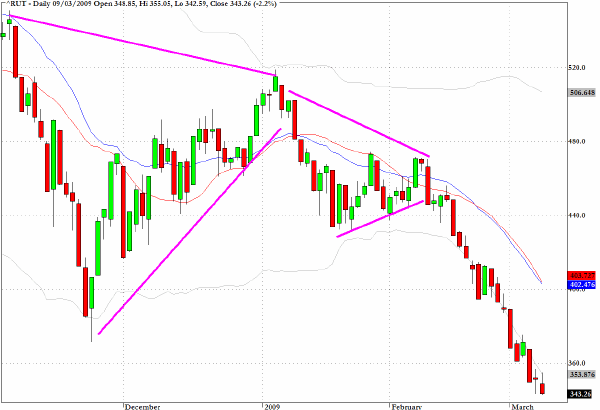
LQD is an ETF which tracks the iBoxx Investment Grade Corporate Bond index, and as the chart reveals, the sector took a big hit yesterday on a substantial increase in volume. Corporate bonds are not having it easy with concerns about the likelihoods of haircuts to bondholders as and when banks like Citigroup are restructured, the increased risk of defaults and downgrades, and also competition from sovereign borrowers.
On the matter of competition from sovereign issuers, I made the following observation yesterday at my personal blog:
As the old saying goes a rolling loan gathers no loss - so let's hope that the US government isn't trying to roll too many of its loans at the same time.
According to Bloomberg “The average maturity of U.S. debt fell to 49 months in the fourth quarter, the lowest since reaching 48 months in the second quarter of 1983, when yields were dropping from the record highs set in 1981. Now, Treasury may have to refinance almost half its $6 trillion of debt over the next year.”
That’s a lot of paper that needs to be purchased when many other sovereign issuers, let alone corporate borrowers, will be trying to refund their maturing debt during 2009. The term “crowding out” may not quite be apt for what could be better depicted as rather brutal contest where only the fittest will survive.
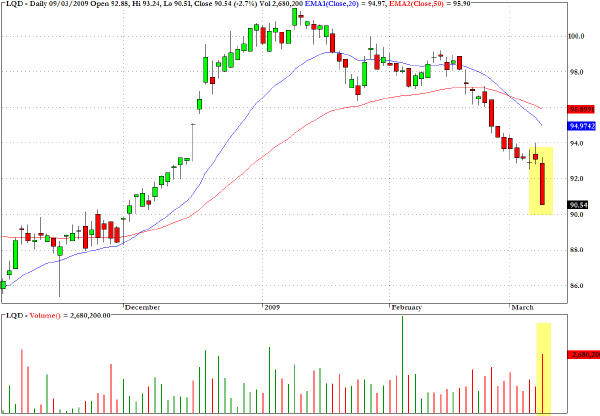
The high-yield corporate bond market is struggling as I discussed yesterday. Another perspective on this sector and one which is tradable via an ETF is the chart for JNK, which is based on a Lehman High Yield Bond index.
According to a report in the Guardian newspaper today, European junk debt is at new peak levels.
The Markit iTraxx crossover index, which rates the market perception of the possibility of default among 50 European junk-rated borrowers, rose to a record 1169 basis points on Monday, ahead of the 1160 points reached last week.
The index was pushed by banks and insurance companies as they are exposed to plunging debt and equity markets.
Analysts fear banks will see more bad loans contaminate their books as well as further losses from their investments in complex debt vehicles and derivatives contracts. "Forward-looking indicators, such as spreads on credit default swaps [a product sold to protect against possible defaults], suggest that more pain is to come," said Gavan Nolan, an analyst at Markit, a financial data provider.
The default rate among speculative-grade-rated European firms is forecast to soar to 22.5% by the end of this year, from 2.7% in February, Moodys said last week.
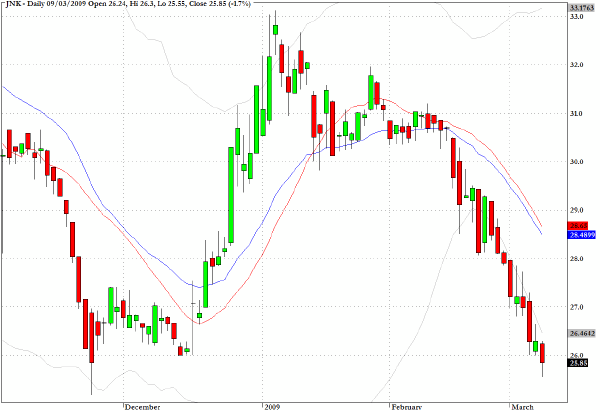
As the chart for FXB reveals the British pound is very close to its recent lows in the neighborhood of $1.36, and, with the dollar index somewhat extended at present, there is room for a short-term tradable bounce.
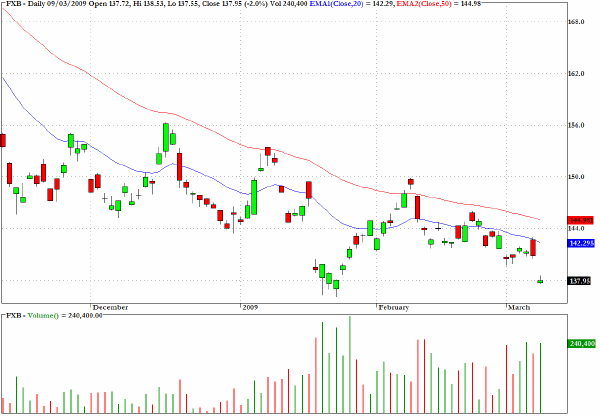
Clive Corcoran is the publisher of TradeWithForm.com, which provides daily analysis and commentary on the US stock market. He specializes in market neutral investing and and is currently working on a book about the benefits of trading with long/short strategies, which is scheduled for publication later this year.
Disclaimer
The purpose of this article is to offer you the chance to review the trading methodology, risk reduction strategies and portfolio construction techniques described at tradewithform.com. There is no guarantee that the trading strategies advocated will be profitable. Moreover, there is a risk that following these strategies will lead to loss of capital. Past results are no guarantee of future results. Trading stocks and CFD's can yield large rewards, but also has large potential risks. Trading with leverage can be especially risky. You should be fully aware of the risks of trading in the capital markets. You are strongly advised not to trade with capital.
|